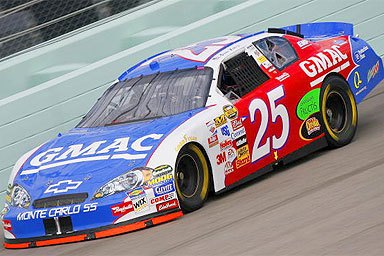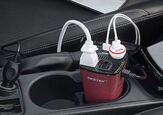GM And GMAC: Together Again?
One of the more dangerous conflicts embedded in the US auto bailout that was identified in the recent Congressional Oversight Panel report has been a TTAC hobbyhorse for some time, namely the tradeoff between GM’s success and that of its former captive finance arm GMAC (now known as Ally Financial). As we wrote back in May,
if government-owned Ally isn’t interested in underwriting GM’s volume gains with risky loans but also isn’t interested in seeing its auto lending business bought by GM, there’s trouble brewing. After all, that would leave GM with only two options: partnering with another bank, or starting a new captive lender. Either way, a new GM captive lender would likely force Ally into offering more subprime business anyway, or face losing its huge percentage of GM business.
Fast forward the better part of a year, and GM has indeed bought its own in-house subprime lender, leaving the COP to term The General’s lack of interest in taking care of “the Ally Tradeoff” as “disconcerting.” After all, with over 20 percent of GM’s equity and over 70 percent of Ally’s stick, the Government should have been able to work out some kind of deal that gets GM and Ally back on the same page… right? Not so fast, reports the WSJ. Ally turned down a $5b GM offer for its wholesale lending business earlier this year, and now it seems another deal may be in the works. But it has nothing to do with maximizing taxpayer payback, and everything to do with shoring up GM’s floorplanning credit. And it’s not coming from the government, but from GM’s newly-ubiquitous CEO Dan Akerson.
The move seems to be motivated by the same fundamental concerns as those that drove the GM-Americredit deal earlier last year, namely analysis from like this nugget from Morgan Stanley
Returning to captive financing is likely a prerequisite for maintaining U.S. market share over 20% longer term. While impossible to quantify, we believe GM is ceding hundreds of basis points of U.S. market share to competitors with integrated finance operations.
But GM CFO Chris Liddell has a serious concern that seems to stand in the way of a GM-Ally reunion, explaining
I am philosophically against having a $100 billion finance company attached to a $50 billion to $60 billion car company. In a [market] downturn, we might be exposed. It’s critical we have credit flowing through those times.
Which raises a very interesting question in light of the credit market’s recent escapades: is it better for an auto firm to take its up-and-down lumps on the open market, or to open itself for even more reward and risk by setting up its own lender which, if improperly managed, could become a driver of credit market failure as GMAC was? Obviously the question is as much about execution as it is about abstract principle (for example, Toyota’s $84b captive lender hasn’t been blamed for any of the company’s recent woes), but because GM seems to be most worried about foregone sales opportunities in the subprime sector, it seems safe to assume that we’re talking about some serious risk.
Meanwhile, with its own IPO planned for the near future, Ally has its own future to worry about. As Chrysler’s main lender, GMAC would lose much of its current business if it became an exclusive GM lender… and based on its relative product situation, it’s fair to assume that Chrysler might suffer even more from credit interruptions than GM. Which means that even a reunion between GM and Ally would not tie up the bailout’s loose ends and internal conflicts. Besides, if Americans are supposed to believe the copious hype around Detroit’s improved products, GM and Chrysler will have to stop blaming a lack of risky loans for their mediocre sales performances. Otherwise, taxpayers will have bailed out companies that must push more risky loans to survive… and the point of the bailout was certainly not to save America’s status as the world’s subprime auto leader.
More by Edward Niedermeyer
Latest Car Reviews
Read moreLatest Product Reviews
Read moreRecent Comments
- ToolGuy™ I respect what the seller is doing, but this vehicle is not for me. (Seller doesn't care, has two people lined up already.)
- SCE to AUX How well does the rear camera work in the rain and snow?
- MaintenanceCosts The Truth About Isuzu Troopers!
- Jalop1991 MC's silence in this thread is absolutely deafening.
- MaintenanceCosts Spent some time last summer with a slightly older Expedition Max with about 100k miles on the clock, borrowed from a friend for a Colorado mountain trip.It worked pretty well on the trip we used it for. The EcoBoost in this fairly high state of tune has a freight train feeling and just keeps pulling even way up at 12k ft. There is unending space inside; at one point we had six adults, two children, and several people's worth of luggage inside, with room left over. It was comfortable to ride in and well-equipped.But it is huge. My wife refused to drive it because she couldn't get comfortable with the size. I used to be a professional bus driver and it reminded me quite a bit of driving a bus. It was longer than quite a few parking spots. Fortunately, the trip didn't involve anything more urban than Denver suburbs, so the size didn't cause any real problems, but it reminded me that I don't really want such a behemoth as a daily driver.


































Comments
Join the conversation
Darn, industrial planning in the real world is fraught with a lot more conundrums than the ivory tower professors and pundits breezily assert. Maybe Krugman will have this all worked out in his next column.
GMAC's problems stem from the housing market and leasing of large trucks. Both of those took big hits and caused lots of problems for GMAC. This is the problem that GM wants to avoid. Toyota captive lender took a smaller hit on lease returns and no hit on the housing market. It was a smart move not to get into that. Comparing the two is not an apples and oranges comparison. Toyota Financial services was the one reason Toyota turned a profit a few quarters back when everyone thought Toyota would have an overall loss. Now, it is very important that GM and for that matter Chrysler have lending arms for subprime and floorplan loans. When the subprime buyers can't find deals at GM or Chrysler, they will be heading to Toyota, Honda, Ford, etc. This is only to level the playing field. Subprime buyers find their way into buying new from all brands.